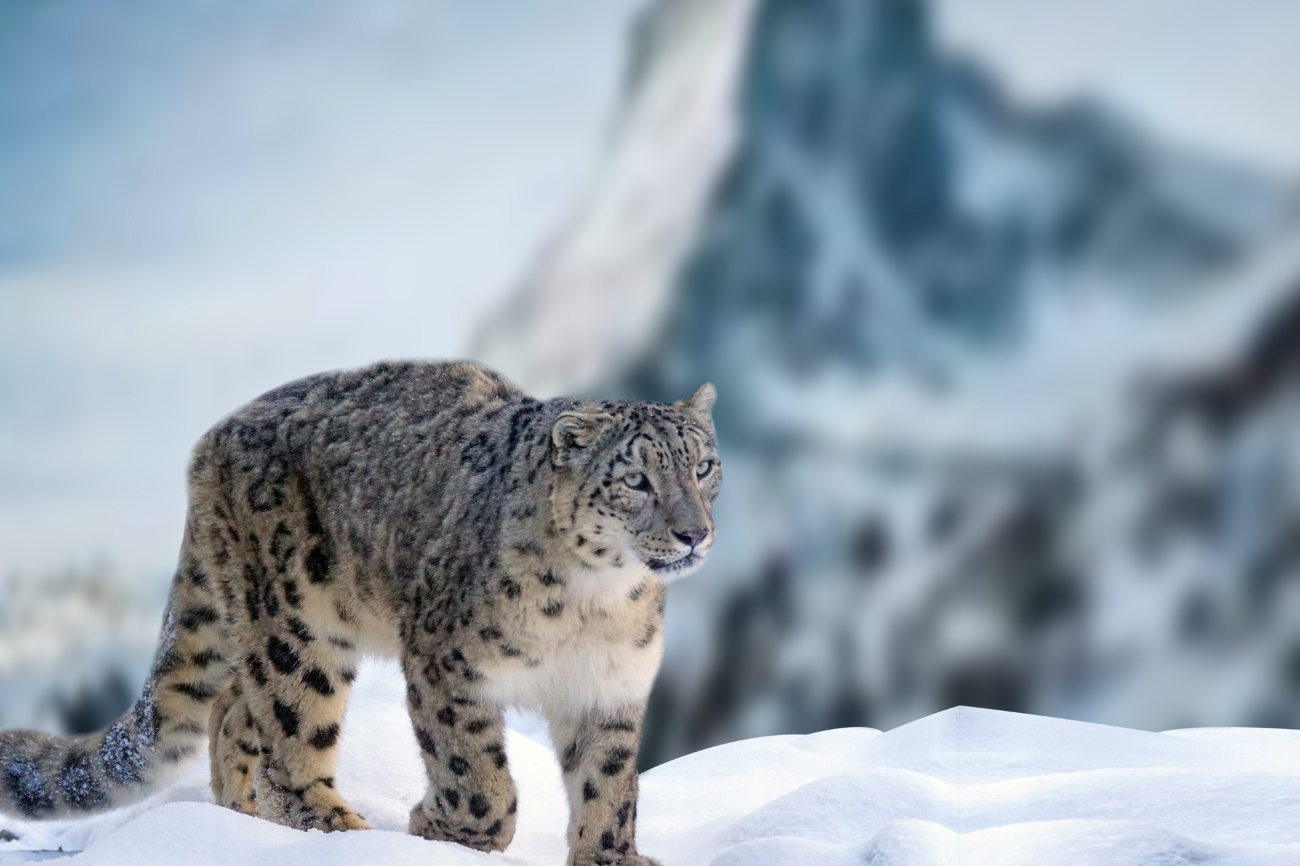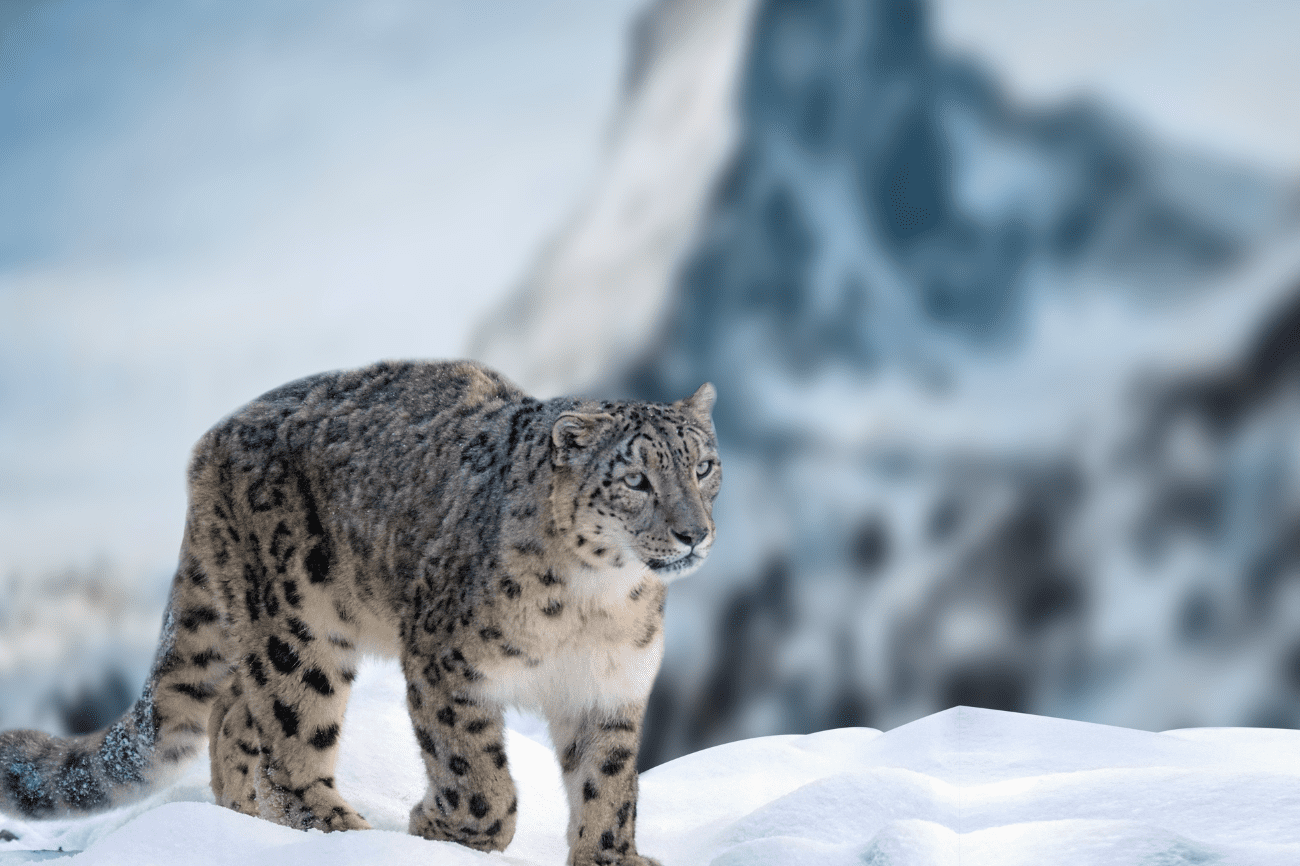
Snow leopards are so rare that many of the researchers who have studied them for decades have never seen one in the flesh.
These big cats may leave droppings or even the occasional tuft of fur in a hair loop, but their passage is often ghostly—so much so, in fact, that photographers are only now capturing many aspects of their lives. In many areas, snow leopards still face conservation threats due to mining development, cattle ranching and persecution by local residents in their range.
Snow leopards
Population growth has prompted the International Union for Conservation of Nature (IUCN) to downgrade the animals from “endangered” to “vulnerable” in 2017.
“They are extremely elusive, much more elusive and harder to spot than most other big cats,” says Jan Janecka, a conservation geneticist at Duquesne University in Pittsburgh.
Despite their elusive nature, however, the charismatic snow leopard is increasing in numbers in regions such as the Qinghai-Tibetan Plateau, a vast area spanning parts of southwest China and bordering countries. This is partly due to the work of local communities to improve education and tolerance.
Where do snow leopards live?
(Credit: Shutterstock/Ondrej Prositsky)
The IUCN estimates that between 2,710 and 3,386 mature snow leopards exist in the wild. They are very thinly spread across 12 countries, from southern Russia and Mongolia to parts of India, Pakistan, Nepal and southern China.
According to work of Yanechka and others, they are broadly divided into three main populations that can be considered subspecies: a northern population in parts of Russia, Mongolia, northern China and Kazakhstan; central population in Tajikistan, Kyrgyzstan, Pakistan, Afghanistan, and northeastern India; and a southern group around the Qinghai-Tibetan Plateau.
Even in areas where the population is considered relatively healthy, each lone adult has a large territory where it lives and hunts. Some estimates put their range at as much as 193 square miles in Mongolia, although in Nepal individuals may have a range of only a few square miles.
Are snow leopards endangered?
(Credit: Shutterstock/Artush)
Population growth has prompted the International Union for Conservation of Nature (IUCN) to downgrade the animals from “endangered” to “vulnerable” in 2017. But in many areas, snow leopards still face conservation threats due to mining development, cattle ranching and persecution by local residents in their range.
Snow leopards’ preference for extremely remote, mountainous areas has compounded the difficulty of tracking their population health. Are they doing badly? Or are they just extremely hard to find, even at the best of times?
Read more: 5 Species You Didn’t Know Were Endangered in 2022
At least in the Chinese parts of the Qinghai-Tibetan Plateau, the latter appears to be true. Although herders may have historically killed snow leopards to protect their livestock there, things have changed in the past decade.
“They’ve expanded into some places where maybe they weren’t as abundant,” Janeka says.
Part of the reason they are doing relatively well in this region may be due to a recovery spurred by stricter anti-poaching laws and enforcement in China, which hosts most of the world’s snow leopards.
“In China, the laws are very strict, there are severe penalties for killing a snow leopard,” says Janeka. “They are really cracking down on poaching and killing cats.”
Snow leopard threats
(Credit: Shutterstock/Bruyu)
Unfortunately, poaching is still a problem elsewhere. Wildlife traffickers are interested in parts of the snow leopards themselves, but poaching their prey also reduces the food available to the big cats, according to Snow Leopard Trust.
They are also killed in many parts of their range in retaliation for killing livestock. The Snow Leopard Trust says almost half of those killed may fall into this category.
Finally, mining development, roads and other types of human infrastructure are encroaching on areas where snow leopards have been relatively free of human influence. These roads — created to reach mines and other infrastructure — also help poachers access formerly remote areas.
Janeka has seen this happen in the Gobi Desert, where he often studies montane predators.
Conservation of the snow leopard
(Credit: Shutterstock/Peter Way)
Across their range, conservationists are working on new ideas to both protect snow leopards and reduce their conflict with wildlife. One of these techniques involves something like a police light: Wildlife managers use flashing lights to deter snow leopards from livestock areas.
in Nepal, the government compensates shepherds when snow leopards kill livestock while the Snow Leopard Trust manages insurance program which compensates herders in different parts of their range.
In many cases, livestock themselves may help snow leopards stay in some areas. Research by Janecka et al found that livestock made up 31 percent of the snow leopard’s diet in Pakistan and 15 percent in Mongolia.
“Herders almost provide an economic service with their livestock,” says Janeka. So it makes sense to compensate them when cats prey on their animals.
How can we help snow leopards?
(Credit: Shutterstock/Vladislav T. Jirusek)
But livestock shouldn’t necessarily be seen as the solution. While snow leopards can feed on these substitutes, livestock encroach on the range of their native prey species such as blue sheep and ibex, pushing them out of some areas.
“The protection and management of regionally specific wild prey is critical to sustaining snow leopard populations,” Janeka and his co-authors write in diet paper“although the overall dietary breadth suggests that snow leopards may exploit other species if necessary, including livestock.”
According to Janeka, working with local stakeholders will equate to conservation success in all parts of their range moving forward.
“One of the most important issues right now,” he says, “is to try to work with these communities to reduce the demand for livestock feed.”
Read more: Scientists are trying to save these animals from extinction

